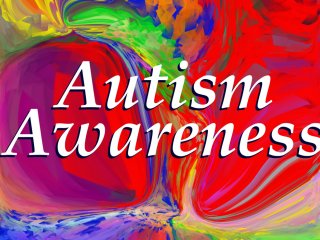Posted April 22nd, 2014
By Guest Blogger
April is Autism Awareness Month
Autism Awareness Month is a special opportunity to educate the public about issues within the autism community and to highlight the growing need for awareness about autism and autism spectrum disorders.
Autism spectrum disorder (ASD) and autism are both general terms for a group of complex developmental disorders. These disorders are characterized by difficulties in social interaction, verbal and nonverbal communication and repetitive behaviors. With the May 2013 publication of the DSM-5 diagnostic and statistical manual, all autism disorders now fall under one umbrella diagnosis of Autism Spectrum Disorder. Formerly, they were recognized as distinct subtypes, including autism, childhood disintegrative disorder, pervasive developmental disorder-not otherwise specified (PDD-NOS) and Asperger’s syndrome. Please refer to the DSM-5 for more information on these changes.
Autism appears to have its roots in very early brain development. However, the most obvious signs of autism and symptoms of autism tend to develop between 2 and 3 years of age. Awareness and insights into autism spectrum disorder is a key aspect of the Autism Speaks organization.
Know the Signs
According to the Autism Society these are some delays in developmental milestones to look for in the children in your life:
- Lack of or delay in spoken language
- Repetitive use of language and/or motor mannerisms (e.g., hand-flapping, twirling objects)
- Little or no eye contact
- Lack of interest in peer relationships
- Lack of spontaneous or make-believe play
- Persistent fixation on parts of objects
For more information on developmental milestones, visit the CDC.
How Common Is Autism?
Autism statistics from the U.S. Centers for Disease Control and Prevention (CDC) identify around 1 in 68 American children as on the autism spectrum–a ten-fold increase in prevalence in 40 years. Studies also show that autism is four to five times more common among boys than girls. An estimated 1 out of 42 boys and 1 in 189 girls are diagnosed with autism in the United States.
What Causes Autism?
Not long ago, the answer to this question would not have been clear. Research is now delivering some answers. There is no known single cause for autism, but it’s generally accepted that it is caused by abnormalities in brain structure or function. Brain scans show differences in the shape and structure of the brain in children with autism versus those in neurotypical children. Researchers are investigating a number of theories, including the links among heredity, genetics and medical problems.
What Does It Mean to Be “On the Spectrum”?
Each individual with autism is unique. Many of those on the autism spectrum have exceptional abilities in visual skills, music and academic skills. About 40 percent have average to above average intellectual abilities. Indeed, many persons on the spectrum take deserved pride in their distinctive abilities and “atypical” ways of viewing the world. Others with autism have significant disability and are unable to live independently. About 25 percent of individuals with ASD are nonverbal but can learn to communicate using other means. No matter where an individual falls on “the spectrum” what is known is that these individuals and those who care for them have unique needs and abilities. Interested in learning more? Click on the links to the organizations who work with those who have ASD and read more about the courses we offer below.
Ed4Career is proud to offer an extensive catalog of courses for individuals interested in learning more about developmental disabilities, included those on the spectrum and for those who want to work as a direct support professional. Please visit our website here to learn more: https://Ed4Career.com/.




